Vegan Globetrotter is supported by our audience. When you purchase through one of our links, we may earn a small affiliate commission. As an Amazon Associate I earn from qualifying purchases. Your cost is not affected.
==================
Induction cooktops are gaining popularity in modern kitchens, not only because of their sleek design and efficient cooking but also because of a range of unique safety features that distinguish them from traditional gas or electric stoves.
These innovations make induction cooktops an intelligent choice for households looking to minimize kitchen accidents while enjoying advanced cooking technology. Join me as we unravel these impressive safety features that make induction cooking safer and more convenient.
Safety Features Unique to Induction Cooktops: Enhanced Security in Modern Kitchens
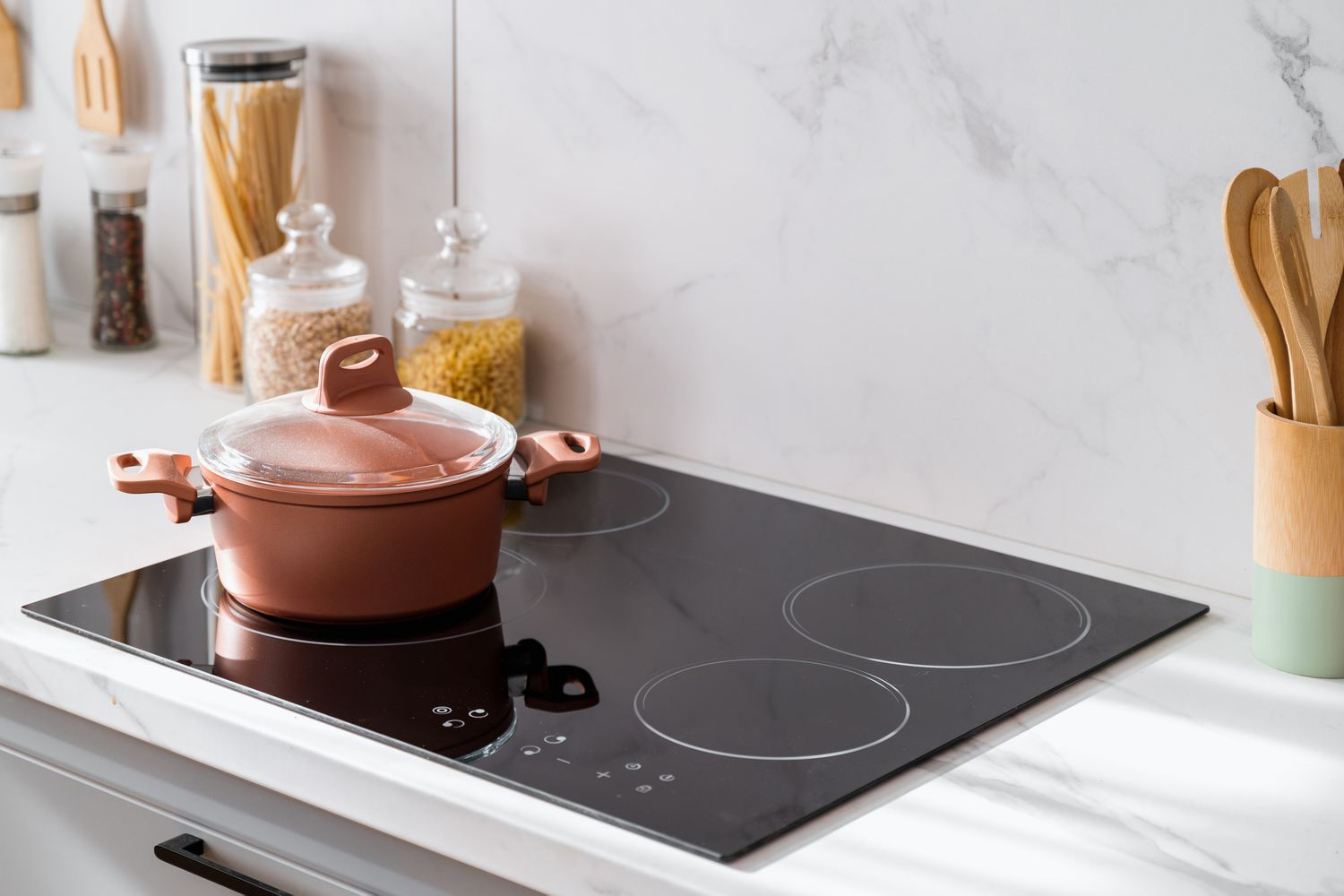
Photo by: Real Simple
Induction cooktops are a game-changer in kitchen technology, prioritizing safety just as much as efficiency and convenience. Unlike traditional gas or electric ranges, induction cooktops have unique safety features designed to mitigate common kitchen hazards. These features rely on the fundamental principles of induction cooking, where electromagnetic energy directly heats the cookware, not the cooktop itself.
Let’s dig deeper into the specifics of how induction cooktops work and why they are becoming a popular choice in modern kitchens.
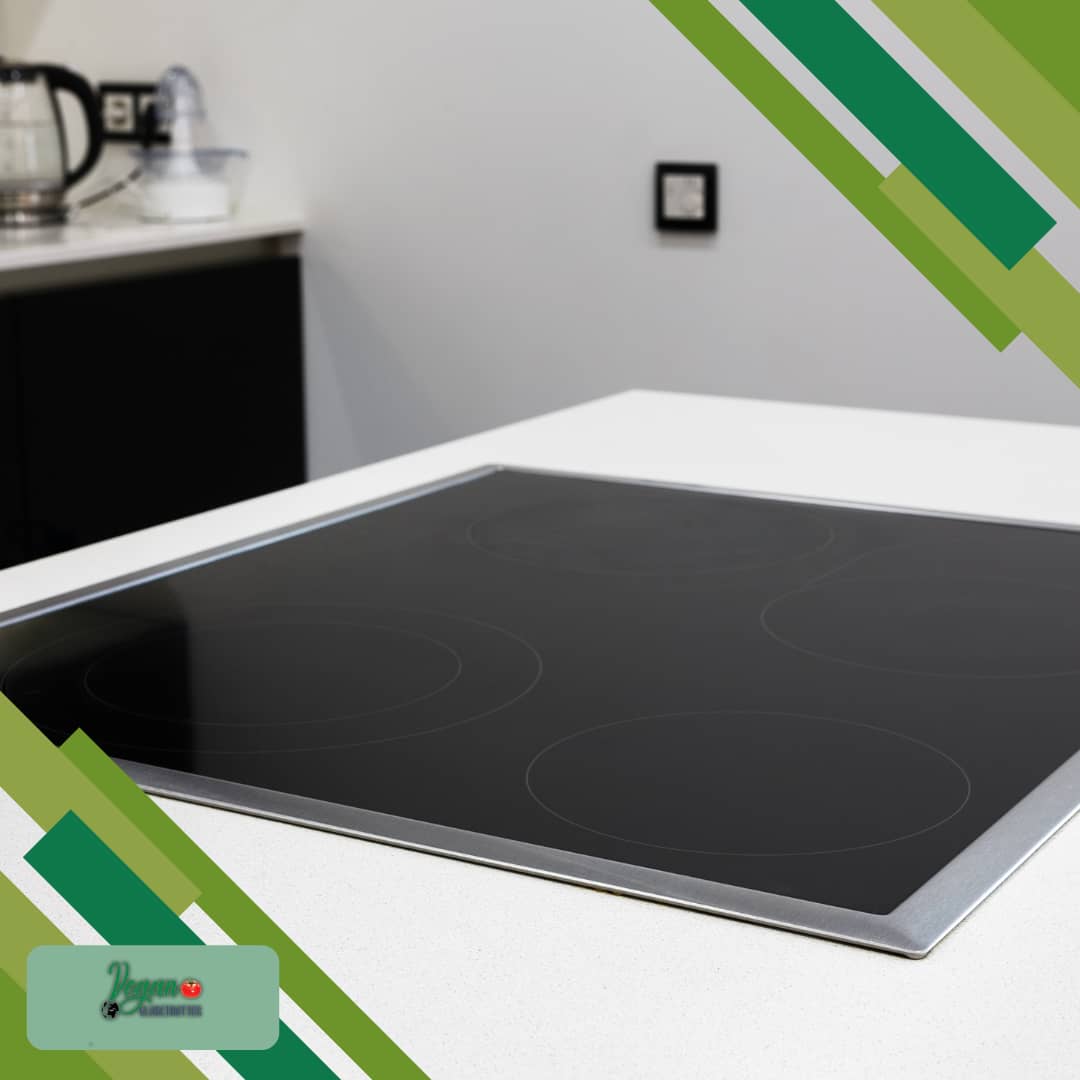
Key Takeaways
- Induction cooktops work by using electromagnetism to heat cookware directly.
- Induction cooktops have various safety features that reduce common kitchen hazards, such as Child Lock functionality and Spill Auto-off.
- Induction cooktops are well-regarded for their safety features, with safety sensors, including pan detection and residual heat indicators, playing a crucial role.
- Induction cooktops have several electrical safety advantages over traditional electric cooktops.
- Thanks to their safety, efficiency, and user-friendly design, induction cooktops can be a smart investment for many people.
Unlocking Safety and Efficiency: The Principles of Induction Cooking
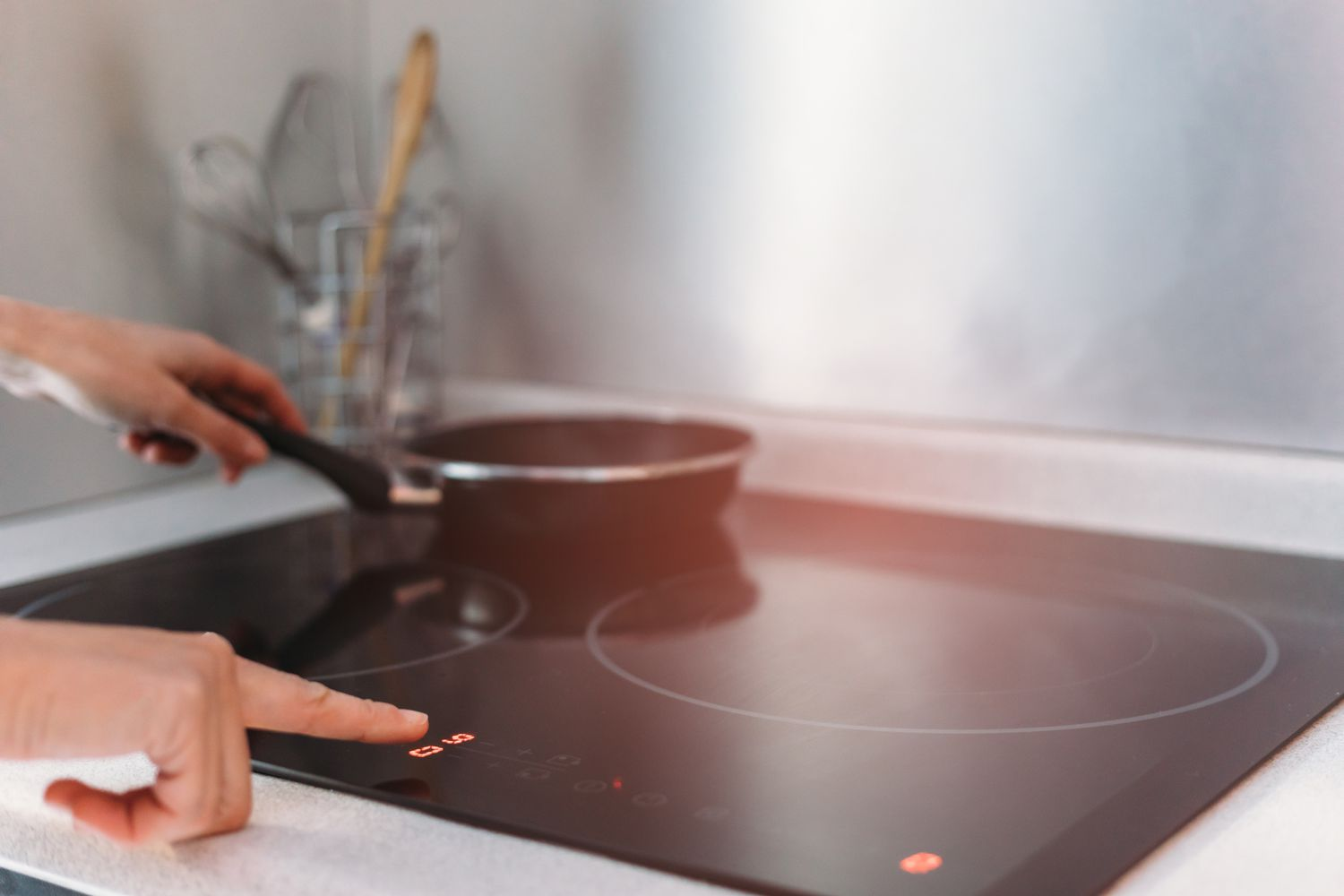
Photo by: Treehugger
Induction cooking operates on a different principle than traditional electric or gas cooktops. The key to an induction cooktop’s function is its use of electromagnetism to heat cookware directly.
Here’s a breakdown of how induction cooking works:
Magnetic Field Generation
- An induction cooktop has a copper coil beneath its ceramic surface.
- When the induction cooktop is turned on, electric current flows through this coil, creating a dynamic magnetic field.
Induction Heat Transfer
- This magnetic field does not generate heat on the cooktop itself.
- Instead, it induces an electrical current in the ferromagnetic cookware placed on it.
Cookware as the Heat Source
- The flow of this induced current through the resistance of the cookware’s material generates heat.
Direct Heating Method
- The cookware heats up and transmits this heat to its contents.
- The stove’s surface remains relatively cool, heating up only from the warmth of the pot or pan.
Here’s an additional video about how to use induction cooktops.
By: Boulevard Home
Did You Know?
Induction cooktops need cookware that can interact with the magnetic field to function properly. To use induction cooking effectively, use cookware made of a magnetic material, such as cast iron or stainless steel.
Unlocking Safety: Advanced Features of Induction Cooktops
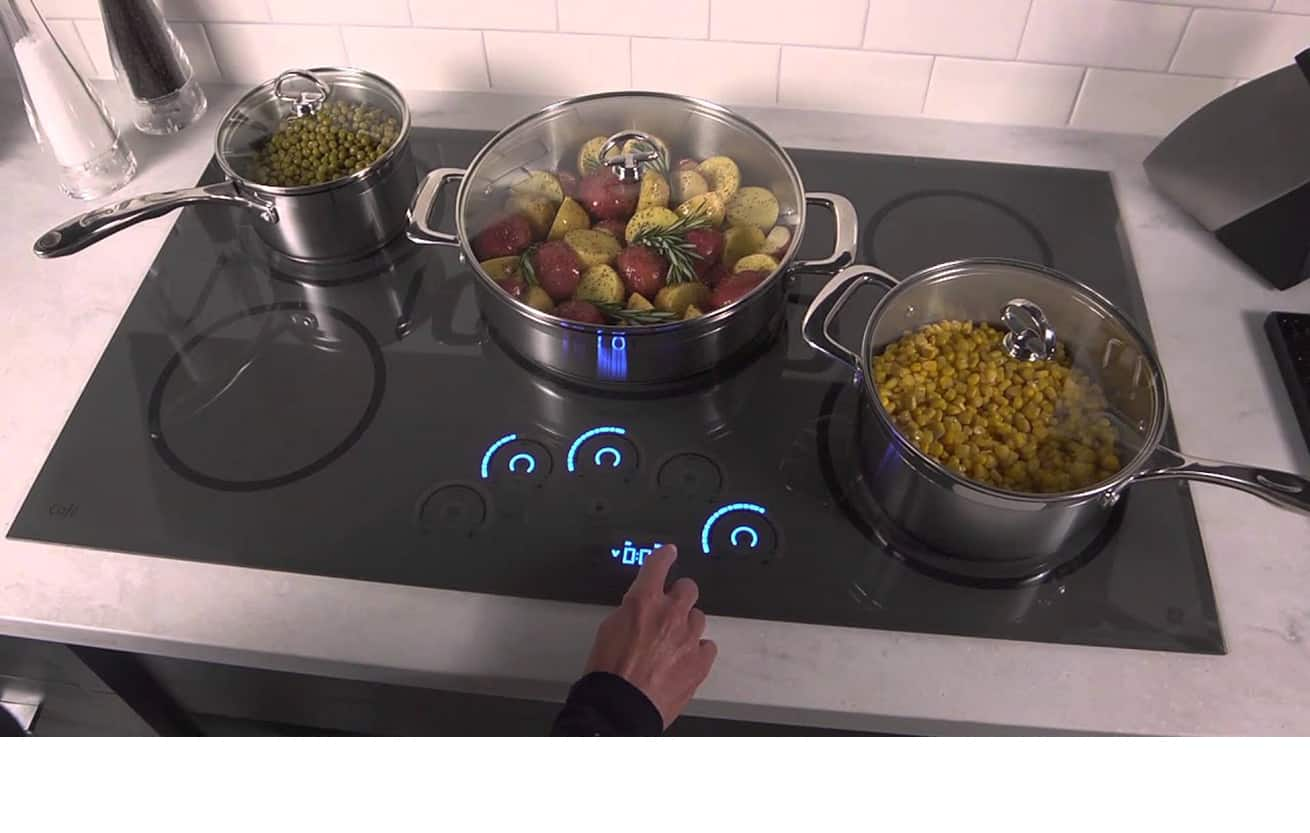
Photo by: Everyday Cheapskate
These proactive safety measures underscore induction cooktops as an excellent choice for families and individuals prioritizing kitchen safety. Here’s a look at the security features:
Child Lock Functionality
Induction cooktops come with various safety features, one of the most crucial for households with children is the child lock functionality. This feature prevents unintended operation, making the kitchen safer for curious kids. When the child lock is activated, all controls are disabled, which means that the cooking zones cannot be switched on accidentally.
The user needs to deactivate the lock before any cooking settings can be changed or cooking can commence. This is important because the cooktop surface stays cool with induction technology, which a child might not realize. The way to turn the child lock on or off can vary depending on the brand and model, so it’s a good idea to check the user manual for specific instructions.
Spillage Auto-Off
When an induction cooktop with this technology detects a spill on its surface, it automatically shuts down to reduce the risk of accidents. The spillage sensor is the key component of this system. Newer models of induction cooktops often have this sensor, and it plays a critical role in the auto-off mechanism:
- Detection: The sensor detects liquid on the cooktop’s surface.
- Response: The induction cooktop immediately turns off the power supply to the heating element.
- Safety Outcome: This quick action limits the extent of the spillage and prevents further hazards.
The spillage auto-off feature is just part of a broader set of safety measures modern induction cooktops offer.

Safety Sensors in Induction Cooktops
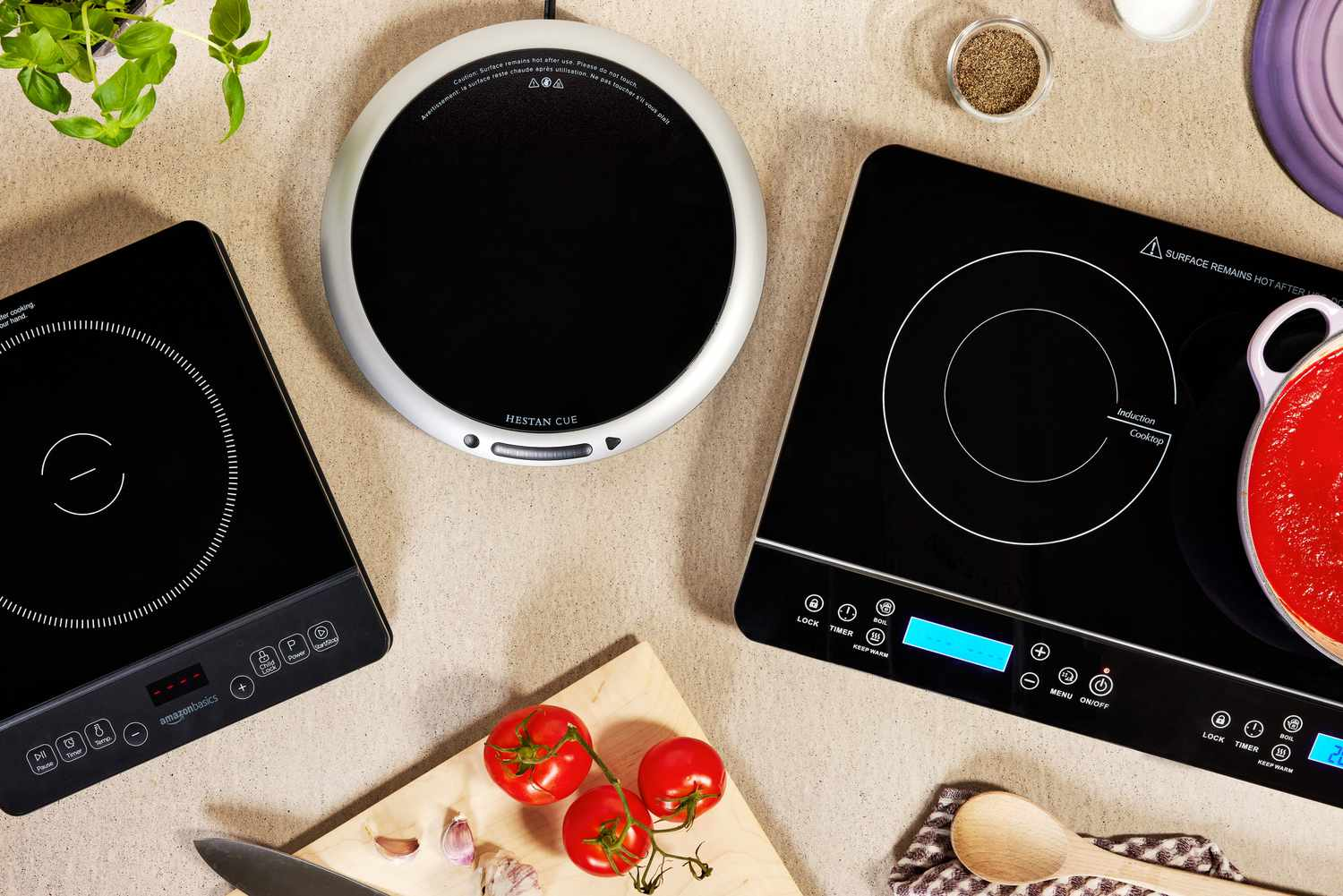
Photo by: EatingWell
Induction cooktops receive praise for their safety features, with safety sensors playing a significant role. These sensors enhance the cooking experience by providing advanced monitoring capabilities.
Pan Detection
This sensor ensures that the cooktop activates only when appropriate cookware is placed. A cooktop won’t heat unless a magnetic pan is detected, which minimizes risks associated with an unattended or empty cooktop. Here are the advantages of pan detection:
- Prevents heating without cookware
- Reduces energy waste
- Enhances user safety
Overheating Protection
Certain models have sensors that monitor the temperature of the bottom of the cookware. If an empty pan is accidentally left on the activated cooktop, the sensor will adjust the power output to prevent damage to the cookware and the cooktop itself. Here are the benefits of overheating protection:
- Shields cooktop from high-temperature damage
- Safeguards cookware integrity
- Contributes to overall kitchen safety
These advanced sensors make induction cooktops a reliable and safe choice for modern kitchens. They ensure efficient cooking while reducing the risk of accidents. Let’s explore how these features make induction cooking safer and more convenient.

Residual Heat Indicators
Induction cooktops have a safety feature called residual heat indicators. These indicators let users know when the cooking surface retains heat after cooking. Induction cooktops heat the cookware directly through electromagnetic fields, allowing the cooktop to stay cooler than the pots and pans used for cooking.
How It Works:
Residual heat indicators typically use a visible signal, often an ‘H’ or a flashing light, to show that an element is still hot to the touch.
Here’s The Safety Benefits:
- These indicators help prevent burns by clearly showing when the cooktop surface is still hot even after removing the cookware.
- They also promote energy conservation by allowing users to use the remaining heat to finish cooking or keep food warm, reducing energy consumption.
Here’s The Design Integration:
- These indicators are usually seamlessly integrated into the cooktop’s design, maintaining a sleek and modern aesthetic.
- Induction cooktops are efficient and safe and incorporate thoughtful features that enhance usability and safety in the kitchen.
Did You Know?
Induction cooktops can boil water much faster than traditional stoves. That’s because all the energy is focused directly on heating the water rather than being wasted on heating the air around it.
Safe Sparks: The Electrical Safety Advantages of Induction Cooktops
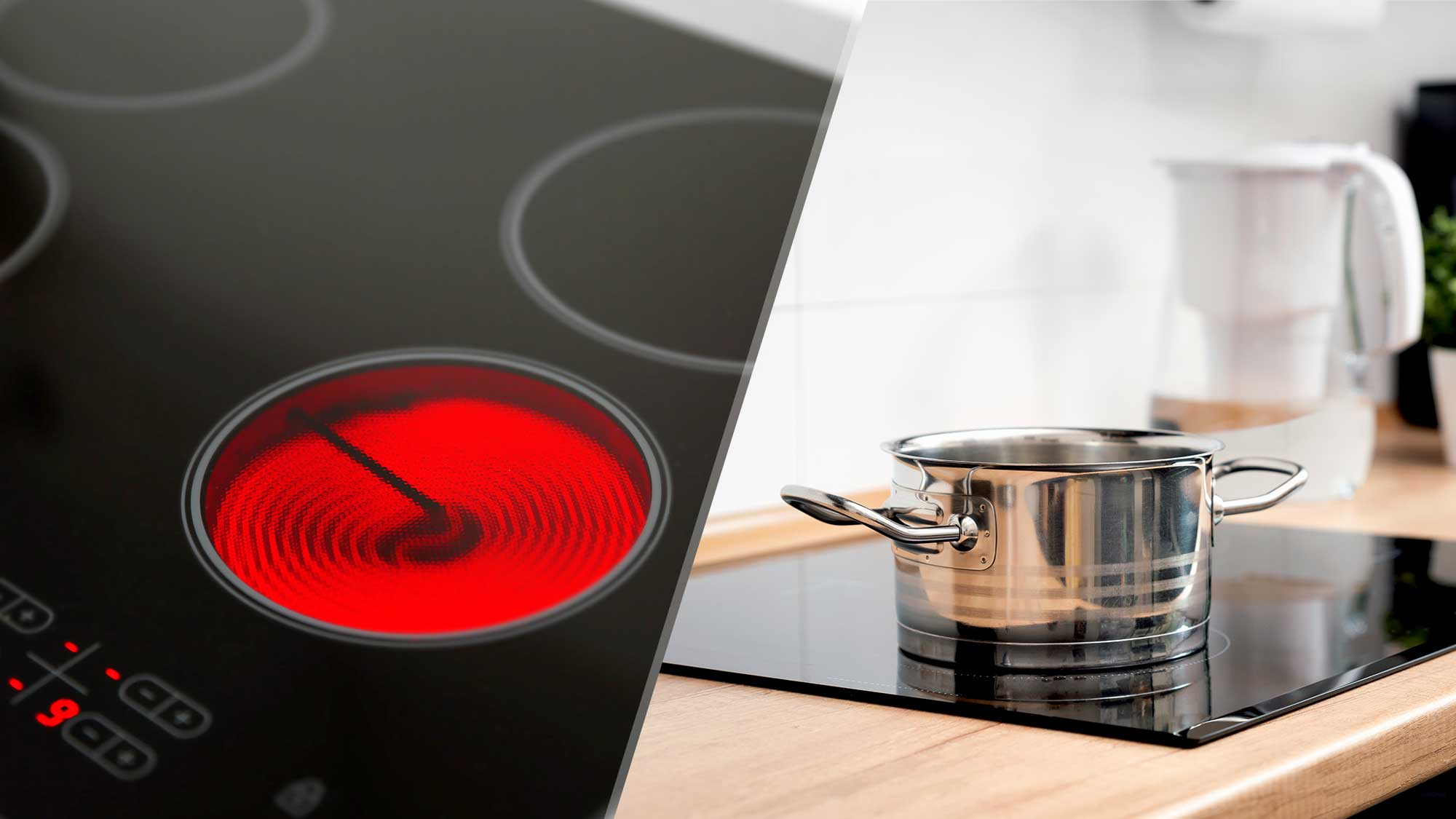
Photo by: Tom’s Guide
Induction cooktops have several electrical safety advantages over traditional electric cooktops. These advantages contribute to a safer cooking environment:
- No Open Element: Unlike electric cooktops, induction surfaces stay cool to the touch since heat is generated directly in the cookware. This significantly reduces the risk of burns from a hot cooking surface.
- Overheating Prevention: Many induction cooktops are designed to shut off automatically when no cookware is detected or if potential safety features indicate a spill or an empty pot, preventing fire hazards.
- Precision Control: Induction cooking allows for precise temperature control, which improves safety by reducing the chance of accidentally overheating oils or other ingredients that could lead to a kitchen fire.
- Energy Cut-off Feature: Induction cooktops commonly come with an automatic energy cut-off feature when cookware is removed, adding a layer of protection against electrical hazards.
These features make induction cooktops convenient and safer to use in your kitchen.
Are Induction Cooktops Worth Buying?
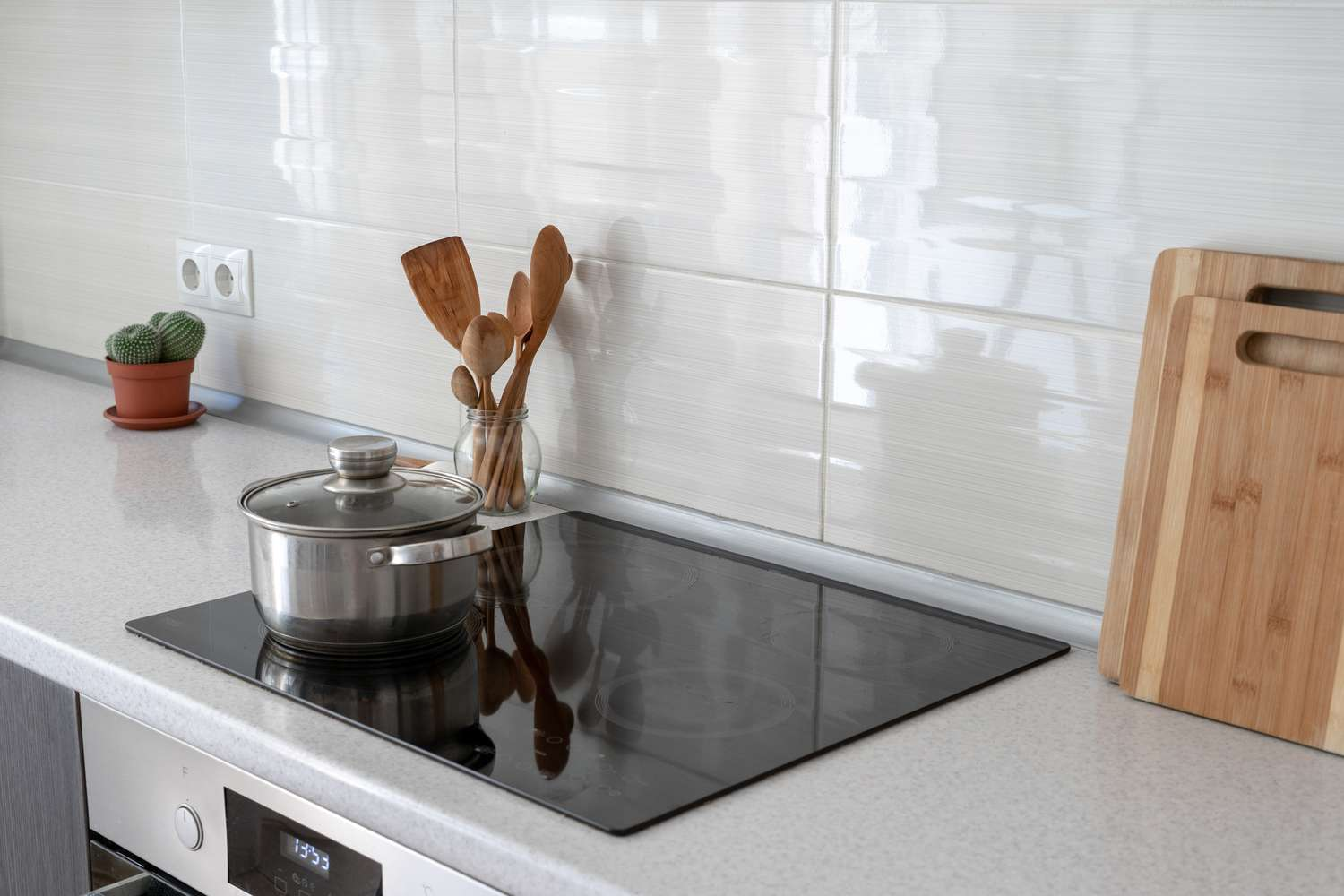
Photo by: The Spruce
Induction cooktops come with a tempting array of benefits, but whether they fit your kitchen depends on your priorities and setup. Let’s break down the pros and cons to help you make an informed decision:
Energy Efficiency: They’re real energy-savers, meaning lower bills and a smaller environmental footprint.
Precision and Speed: Induction cooktops heat quickly and offer precise temperature control, perfect for techniques like simmering or searing.
Easy Cleaning: Say goodbye to stubborn spills! Since the surface doesn’t scorch easily, cleaning up is a breeze.
Cookware Compatibility: You’ll need magnetic cookware, like cast iron or certain stainless steel, which might mean investing in new pots and pans.
Limited Heat Distribution: While they excel at precise control, they might not be the best for techniques that require even heat distribution across the entire pan bottom, like wok cooking.
Here Are Some Extra Things to Mull Over:
- Cooking Style: If you’re all about precision, speed, and safety, induction is a winner. But if your heart beats for wok cooking or you need that perfect heat distribution, gas or another electric option might be your best bet.
- Kitchen Ventilation: Induction cooktops still require good ventilation to whisk away cooking fumes and moisture.
Induction cooktops can be a smart investment for many folks thanks to their safety, efficiency, and user-friendliness.
Here’s an additional video about the pros and cons of induction cooktops.
By: Boulevard Home
Elevating Kitchen Safety with Induction Cooktops

From automatic shut-off capabilities to child lock functions and advanced sensors, induction cooktops prioritize safety without compromising efficiency or performance. These features ensure a safe cooking environment while providing peace of mind.
Induction cooktops have numerous safety advantages and modern conveniences, making them a worthy consideration for any kitchen upgrade. Whether you value safety, efficiency, or ease of use, induction cooktops offer a compelling solution to elevate your cooking experience.
If you want to enhance your kitchen security, look no further than the unique safety features of induction cooktops. They provide advanced safety measures and enhance the cooking experience with their precise control and energy efficiency.
Frequently Asked Questions
How Does an Induction Cooktop Ensure Safe Operation Compared to Traditional Electric Cooktops?
The safety of induction cooktops comes from how they heat cookware directly using magnetic induction, which lowers the risk of burn injuries. This method also keeps the surface cooler to the touch than traditional electric cooktops, making them safer to operate.
Can Using an Induction Cooktop Reduce the Risk of Burns Compared to Other Cooking Methods?
Induction cooktops are great at reducing the risk of burns because they only generate heat where the cookware is placed. This means that the surface around the cookware stays relatively cool, greatly reducing the chances of accidental burns. It’s a fantastic safety feature that many families find reassuring, especially those with curious kids or pets roaming around the kitchen!
What Precautions Should Be Taken When Using Induction-compatible Cookware?
It’s crucial to use cookware with a flat, magnetic bottom to ensure it makes proper contact with the induction cooktop for efficient heating. Also, steer clear of cookware with abrasive bases that could scratch the cooktop surface.
Find Us on Social Media
Facebook: VeganGlobetrotter Join us on our Facebook page, VeganGlobetrotter, where we share mouthwatering plant-based recipes and tips to inspire your vegan lifestyle.
Instagram: _veganglobetrotter Follow us on Instagram at _veganglobetrotter to embark on a visual journey of delectable vegan dishes.
Pinterest: theveganglobetrotter Dive into the world of plant-based goodness and wellness with our Pinterest account, theveganglobetrotter.
Twitter: VeganGlobetrot Stay up-to-date with the latest vegan trends, insightful articles, and exciting updates by following us on Twitter at VeganGlobetrot.

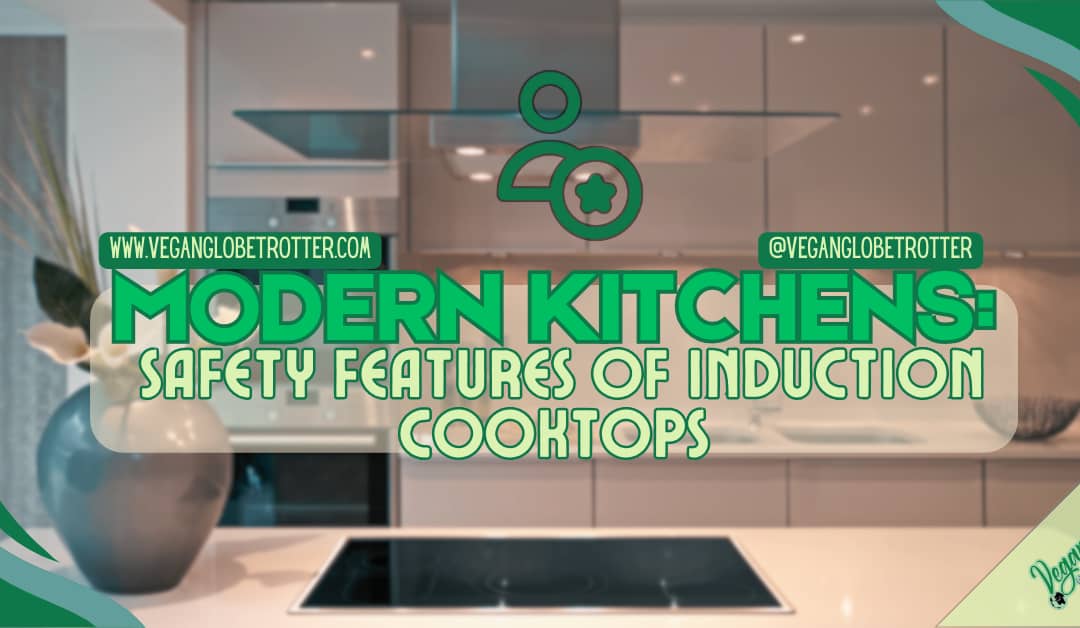



Don't miss out
when new recipes and information are added!
Join our newsletter for free recipes,
healthy living inspiration, and special offers
You have Successfully Subscribed!